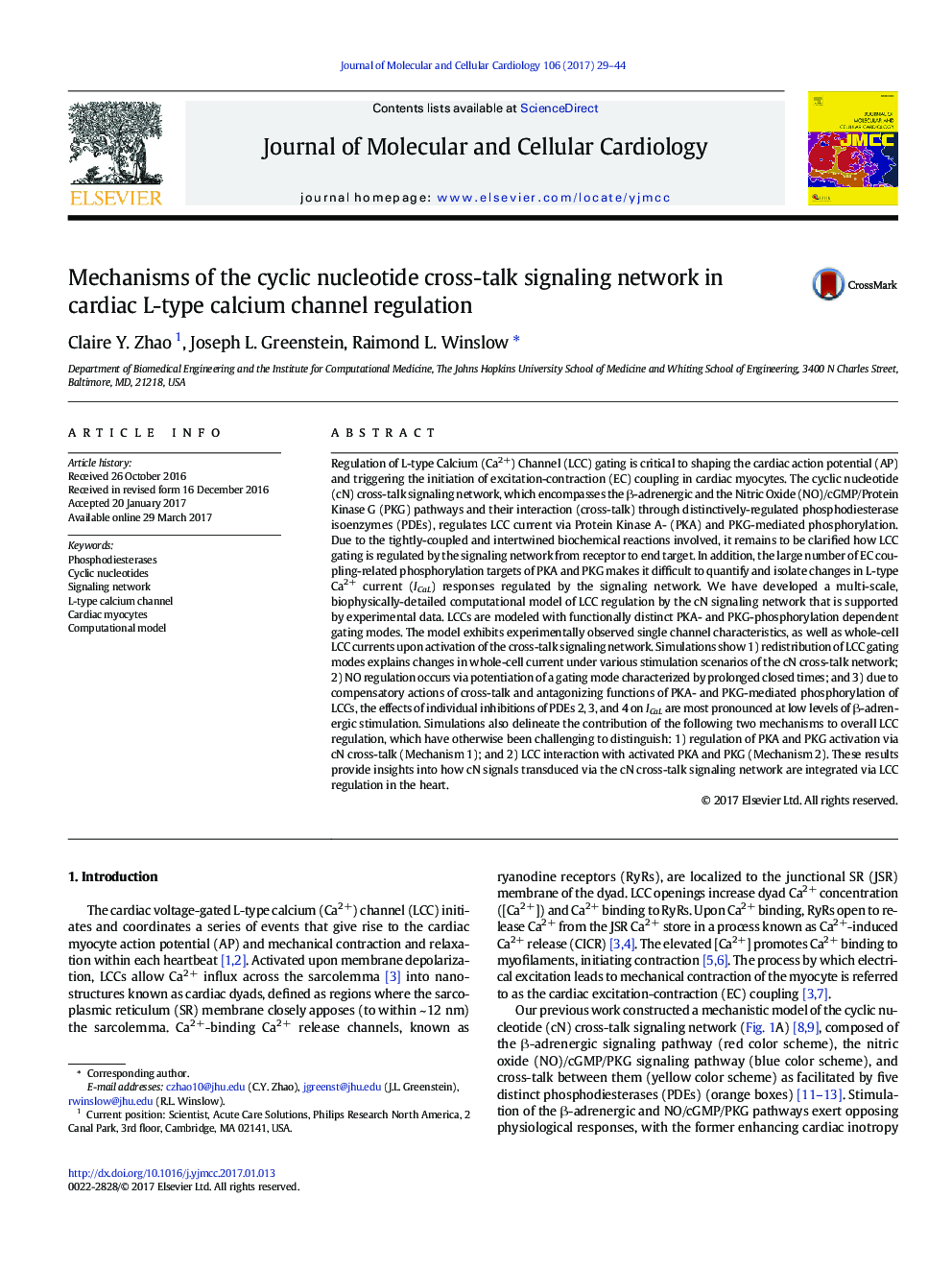| کد مقاله | کد نشریه | سال انتشار | مقاله انگلیسی | نسخه تمام متن |
|---|---|---|---|---|
| 5533553 | 1550400 | 2017 | 16 صفحه PDF | دانلود رایگان |

- Model analyzes L-type Calcium Channel (LCC) regulation by cyclic nucleotide (cN) cross-talk signaling network.
- Model distinguishes LCC regulation mechanisms: cN cross-talk (Mechanism 1) versus interaction with PKA and PKG (Mechanism 2).
- NO suppression of ICaL occurs via potentiation of gating mode with prolonged closed times.
- Changes to ICaL are mitigated by cN cross-talk and redistribution of LCC gating modes.
- Model provides insights into how cN signals are integrated via LCC regulation in the heart.
Regulation of L-type Calcium (Ca2+) Channel (LCC) gating is critical to shaping the cardiac action potential (AP) and triggering the initiation of excitation-contraction (EC) coupling in cardiac myocytes. The cyclic nucleotide (cN) cross-talk signaling network, which encompasses the β-adrenergic and the Nitric Oxide (NO)/cGMP/Protein Kinase G (PKG) pathways and their interaction (cross-talk) through distinctively-regulated phosphodiesterase isoenzymes (PDEs), regulates LCC current via Protein Kinase A- (PKA) and PKG-mediated phosphorylation. Due to the tightly-coupled and intertwined biochemical reactions involved, it remains to be clarified how LCC gating is regulated by the signaling network from receptor to end target. In addition, the large number of EC coupling-related phosphorylation targets of PKA and PKG makes it difficult to quantify and isolate changes in L-type Ca2+ current (ICaL) responses regulated by the signaling network. We have developed a multi-scale, biophysically-detailed computational model of LCC regulation by the cN signaling network that is supported by experimental data. LCCs are modeled with functionally distinct PKA- and PKG-phosphorylation dependent gating modes. The model exhibits experimentally observed single channel characteristics, as well as whole-cell LCC currents upon activation of the cross-talk signaling network. Simulations show 1) redistribution of LCC gating modes explains changes in whole-cell current under various stimulation scenarios of the cN cross-talk network; 2) NO regulation occurs via potentiation of a gating mode characterized by prolonged closed times; and 3) due to compensatory actions of cross-talk and antagonizing functions of PKA- and PKG-mediated phosphorylation of LCCs, the effects of individual inhibitions of PDEs 2, 3, and 4 on ICaL are most pronounced at low levels of β-adrenergic stimulation. Simulations also delineate the contribution of the following two mechanisms to overall LCC regulation, which have otherwise been challenging to distinguish: 1) regulation of PKA and PKG activation via cN cross-talk (Mechanism 1); and 2) LCC interaction with activated PKA and PKG (Mechanism 2). These results provide insights into how cN signals transduced via the cN cross-talk signaling network are integrated via LCC regulation in the heart.
Journal: Journal of Molecular and Cellular Cardiology - Volume 106, May 2017, Pages 29-44